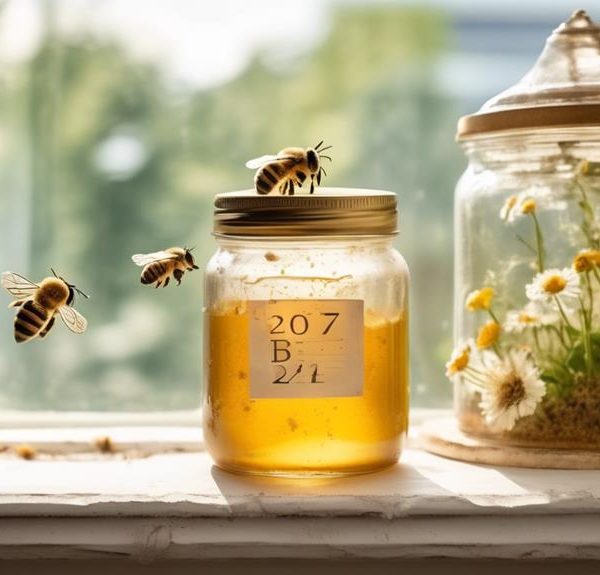Marvel at the transformation of beeswax candles from their natural honey hue to pristine white, and discover the intriguing factors that influence it.
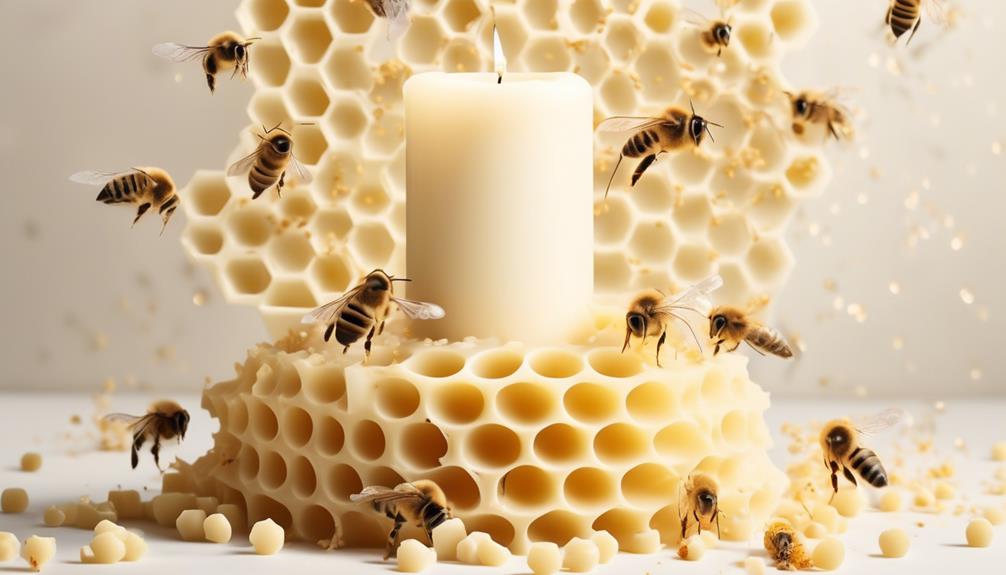
Can Beeswax Candles Be White?
Let's gently unwrap the mystery of beeswax's hue, particularly when it comes to the crafting of candles.
You might have noticed, if you're a fan of beeswax candles, that they typically aren't as crystal clear in color as their paraffin or soy counterparts. In fact, beeswax's natural shade tends to lean more towards a warm gold or honey color.
Can beeswax candles be white, then? Yes, they absolutely can be, but there's a catch.
How this transformation occurs, the factors influencing it, and the implications of this metamorphosis are interesting aspects to consider as you explore the world of beeswax candles.
Key Takeaways
- The natural color of beeswax can vary depending on factors such as the type of flowers the bees have been foraging and the age and cleanliness of the wax.
- The color of beeswax candles can also be influenced by the type of flowers the bees have been foraging, as well as the age and cleanliness of the beeswax.
- The processing methods used, such as filtration and bleaching, can alter the color of beeswax and beeswax candles.
- Filtration and chemical bleaching are common processes used to achieve whiter beeswax candles.
Understanding Beeswax's Natural Color
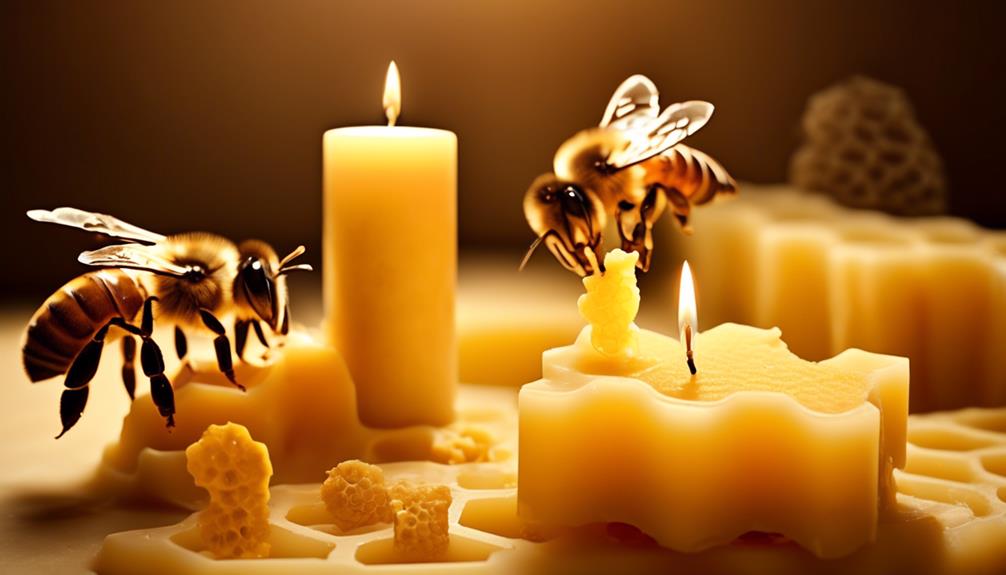
Diving into the heart of the matter, it's essential to understand that the natural color of beeswax, ranging from bright yellow to darker hues, is primarily influenced by the type of flowers the bees have been foraging.
You see, bees collect nectar and pollen from various floral sources, which directly impact the pigmentation of the produced beeswax. For instance, if bees predominantly feed on clover, the resulting wax tends to be lighter. Conversely, foraging on buckwheat often results in a darker wax.
Moreover, the age and cleanliness of the wax also affect its color. Freshly produced wax is generally transparent but gains color as it gets filled with pollen oils and propolis. Over time, as the bees use and reuse the comb, the wax darkens.
The process of extracting and purifying beeswax also plays a role in its final color. Unprocessed raw beeswax can contain impurities, resulting in a darker color. However, through a process of filtration, these impurities are removed, rendering the wax lighter.
Thus, understanding these factors is crucial to comprehend why beeswax candles can appear white.
Factors Influencing Beeswax Color
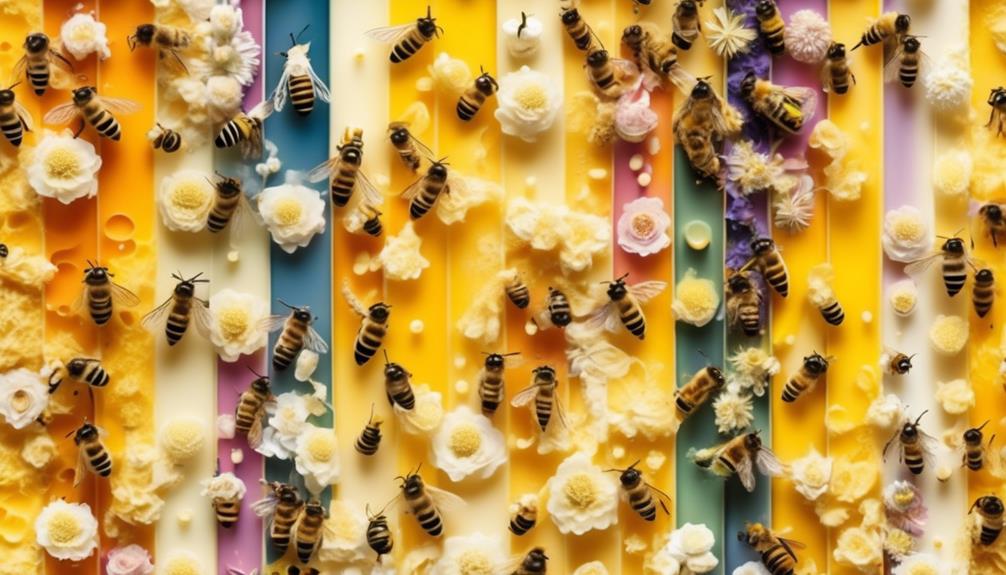
A multitude of factors come into play when it comes to determining the color of beeswax, and understanding these can help you anticipate the hue of the final product. The most predominant factor is the type of flowers the bees have been foraging. The nectar and pollen from different flowers can significantly vary in color, ranging from light yellow to dark brown, which directly impacts the color of the beeswax.
Additionally, the age and cleanliness of the beeswax play substantial roles. Freshly produced beeswax is often lighter, while older or recycled wax usually turns darker due to accumulated impurities and exposure to elements over time.
Lastly, the processing method can alter the beeswax color. Unprocessed, raw beeswax is typically darker due to the presence of impurities. However, when it's processed and filtered, most of these impurities are removed, resulting in a lighter-colored beeswax. Bleaching, either chemical or natural, can also be used to achieve a whiter beeswax.
Processes to Whiten Beeswax

To achieve the desired whiteness in your beeswax candles, you'll need to understand a few key processes.
Filtration is the first process you'll encounter. You'll strain the melted beeswax through a fine mesh or cloth to remove impurities. This can be done multiple times to ensure the beeswax is as clean as possible.
Next, there's chemical bleaching. This involves the use of chemicals like hydrogen peroxide or bleach to lighten the beeswax. It's an effective method, but you must be careful to ensure no residual bleach remains in the beeswax. This could potentially release harmful fumes when the candle is lit.
Pros and Cons of White Beeswax Candles

While white beeswax candles are highly sought-after for their aesthetic appeal, it's important to consider both the benefits and potential drawbacks before making your choice.
On the pro side, white beeswax candles are known for their long, clean burn, emitting virtually no smoke or soot. They're hypoallergenic, which makes them a superb choice for individuals with asthma or allergies. Additionally, they naturally emit negative ions when lit, which can purify the air by neutralizing positive ions emitted by electronics. Their natural, light scent is another appealing attribute, providing a subtle ambiance without overpowering your senses.
Conversely, there are a few cons to consider. White beeswax candles are typically more expensive than their paraffin counterparts due to the bleaching process they undergo to achieve their pure color. This process can also potentially remove some of the therapeutic benefits associated with yellow beeswax. Lastly, while their scent is mild and pleasant, it mightn't be strong enough for those who prefer a more fragrant candle.
Purchasing White Beeswax Candles
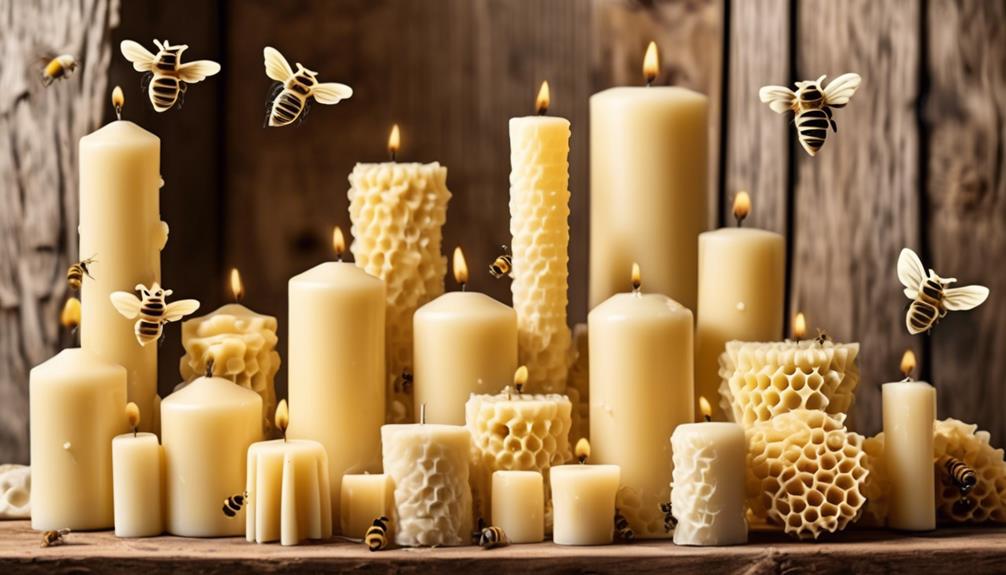
When you're ready to buy white beeswax candles, it's crucial to factor in their quality, origin, and price, ensuring you're getting the best value for your money. High-quality beeswax candles are often pricier than their paraffin counterparts, but they're worth the investment because they burn longer, emit less soot, and produce a brighter flame.
Check the labels carefully for the source of the beeswax. Look for candles made from 100% pure beeswax. Some manufacturers blend beeswax with other waxes to cut costs, compromising the quality and benefits of pure beeswax. You'll also want to ensure that the beeswax is sustainably sourced.
When it comes to price, don't be swayed by cheap alternatives. Remember, you're not just buying a candle; you're investing in a healthier, cleaner-burning, and more eco-friendly product.
Lastly, consider buying from local artisans or online retailers that specialize in beeswax products. They often offer a wider variety of shapes, sizes, and scents, and you can be more confident in the authenticity of their products.
Frequently Asked Questions
What Are Some Other Uses for Beeswax Besides Candle Making?
You're not limited to just making candles with beeswax. It's incredibly versatile. You can use it in cosmetics like lip balms and lotions due to its moisturizing properties.
It's also found in food wrappings as a natural alternative to plastic.
Beeswax can be used to polish wood and sealant in woodworking.
It's even used in encaustic painting, a method involving heated beeswax.
How Does the Burning Time of Beeswax Candles Compare to Other Types of Candles?
Yes, beeswax candles can be white. The color of a beeswax candle depends on the purification process. When beeswax is completely purified, it becomes white. However, most beeswax candles retain a natural, golden hue because they're only lightly filtered. This preserves the sweet, honey-like fragrance.
Are There Any Safety Considerations to Be Aware of When Burning Beeswax Candles?
Yes, there are safety considerations you should be aware of when burning beeswax candles. Like any candle, they can cause fires if not used properly. Don't leave them unattended or burn near flammable objects. Trim the wick to a quarter inch before lighting to prevent a large flame. Also, keep them out of drafts to prevent rapid burning. Lastly, use a suitable holder to catch any dripping wax.
It's always best to follow candle safety guidelines.
Can Beeswax Candles Cause Allergic Reactions?
Yes, beeswax candles can cause allergic reactions. If you're allergic to bee products, you'll likely react to these candles. Symptoms can be mild, like a runny nose or sneezing, or severe, like difficulty breathing.
Beeswax candles also emit natural pollutants, which might trigger allergies. It's best to test your sensitivity before using them regularly. Remember, everyone's immune system responds differently, so what's harmless for one person may be harmful for another.
How Can I Properly Store My Beeswax Candles to Maintain Their Quality and Longevity?
You can store your beeswax candles effectively by following these steps:
- Keep them in a cool, dark place. Avoid high temperatures as they'll cause the wax to melt or deform.
- Don't wrap them in plastic; it can trap moisture and damage the candle. Instead, use acid-free tissue paper.
- Lastly, keep them upright to prevent warping.
Proper storage ensures your candles maintain their quality and last longer.
Conclusion
So, can beeswax candles be white? Absolutely! Beeswax's natural color can be manipulated through bleaching or filtering processes. However, you must weigh the pros and cons—white beeswax candles may lack the honey scent and beneficial ions of their unprocessed counterparts.
Nonetheless, if you're after a sleek, modern aesthetic, white beeswax candles might just be your perfect pick. Ensure you purchase from reputable sellers to guarantee quality.

